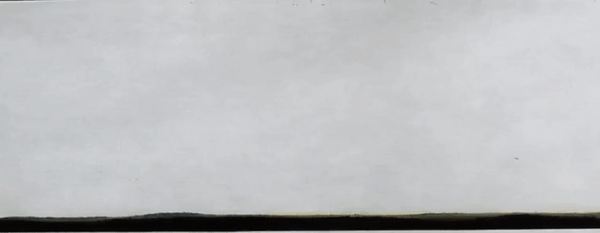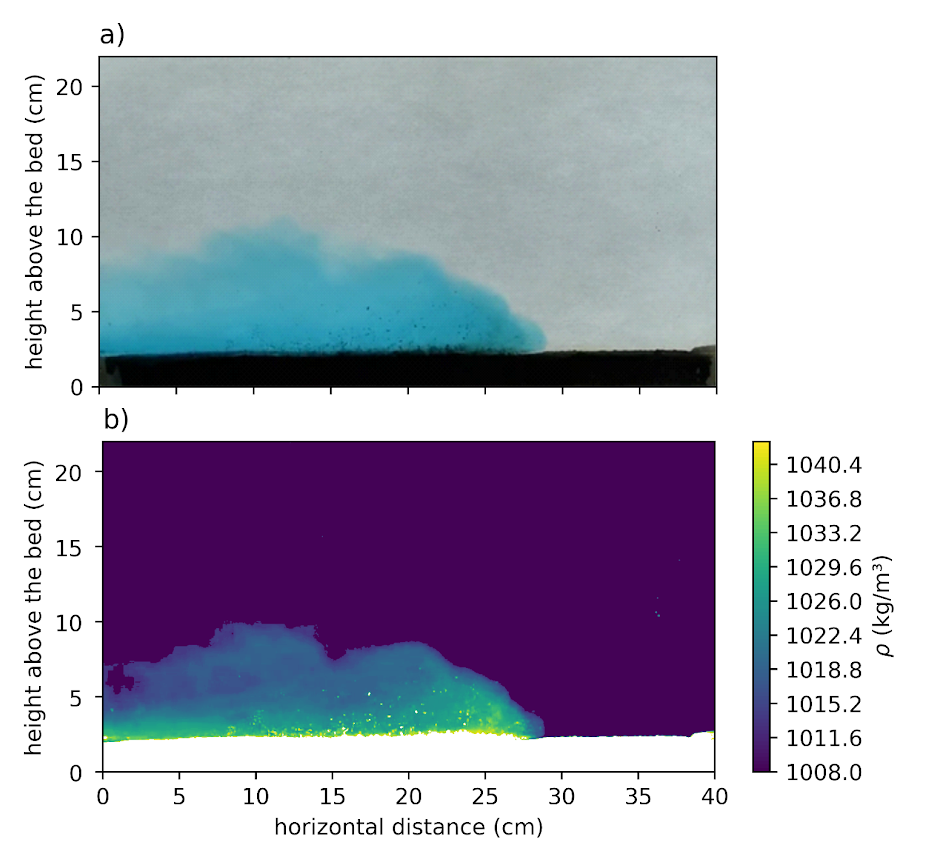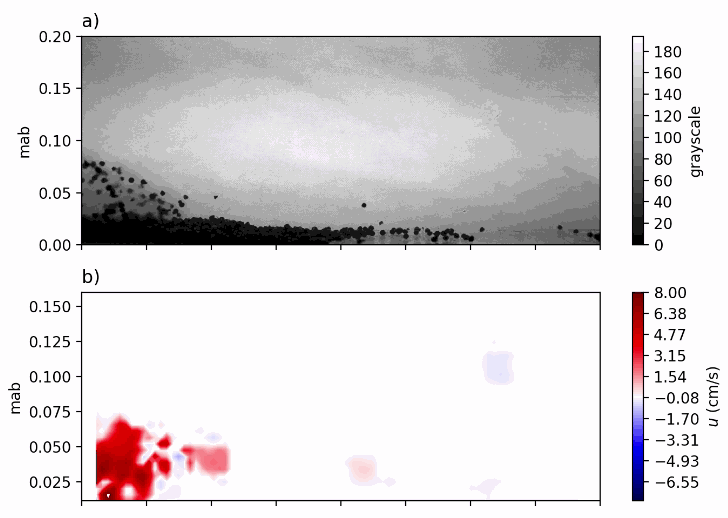Dyenamic: a gravity current analyzer for lock-released experiments

This project is a group of studies developing an open-software designed to investigate gravity currents in laboratory tanks. The software provides a set of tools to estimate some physical indices related to the dynamic and mixing of gravity current and the sediment transport in cases of erodible beds (Silva et. al, 2021; XXIV SBRH).
The purpose of the program is to provide physical parameters to analyze the dynamic of gravity currents and sediment transport through a simple recorded video. The Dyenamic is designed to be a powerful, easily accessible, and universal software to analyze gravity currents from numerical models and laboratory tanks.
Main Goal:
The quantitative analysis of gravity current and sediment transport in laboratory tanks requires a costly and time-consuming effort to process and analyze results from laboratory experiments and numerical modes. The Dyenamic is a tool that can be used easily to obtain many physical parameters, combing the numerical approach with the theoretical framework of gravity currents.
Demonstrations:
Gravity current occurs when the denser fluid flows in one direction along the bottom of the system whilst the lighter one flows in the opposite direction along the top boundary. This phenomenon occurs due to the difference in the hydrostatic pressure (heavier fluid stays in the bottom, whilst lighter fluid goes up). In this case, the velocity of the current is controlled essentially by the ratio of the flow inertia to the gravitational force (density difference and boundaries conditions), often described by the dimensionless densimetric Froude number (Fr). Gravity current is a fundamental fluid mechanics phenomenon, often used to exemplify the buoyancy-driven flow, which is included in most textbooks that introduce the basis of stratified flows.

Water density field:
Based on grayscale values (which must be previously calibrated by users) and a linear relationship, the program estimates the water density, separating the volume of water from the sediment particles. This analysis is provided step by step, characterizing the temporal evolution of the gravity current and the fluid density change (Fig 2).
Temporal evolution of the density field:
The program shows the evolution of the density field for a specified height. From this information is possible to find many interesting mechanisms associated with the current mixing, including the maximum water density of the analyzed area, which may characterize the front dilution and the water density variation between ambient and current head and body.
PIV measurements:
Dyenamic is coupled with a PIV algorithm, which is capable to provide the inner velocity field (Fig 3). This analysis can be done using tracer particles, which may vary the size depending on the required resolution. This analysis can reveal the vertical and horizontal components of the velocity field frame by frame.

Compare different experiments:
Using Dynamic is easy to compare different experiments, varying the initial density stratification, the geometrical condition of the flow, and many other features that can be tested to observe the influence on the propagating of gravity current (Fig 4a) and its influence on the transport of sediment (Fig 4b).
This analysis can be also used to compare numerical model simulations with laboratory experiments, providing good comparison and a way to help with the calibration procedure of numerical models.
Data of demonstrations:
The data presented in Fig2-4 were generated to demonstrate the versatility of Dyenamic to obtain and characterize the dynamic of gravity currents and sediment transport. All these examples were published in a conference paper: and data are available here for anyone that wishes to run Dyenamic with the same data.